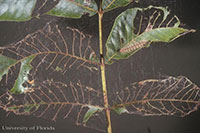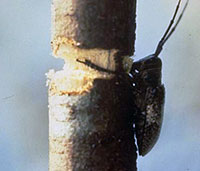Different Pests Cause Different Damage
Insects can become pests in the garden when they cause damage to garden plants. The signs of damage vary, typically depending on the way that the insect feeds on the plant.
Damage from insects with chewing mouthparts typically appears on leaves or stems as ragged edges, holes, or other missing tissue. Insects that often cause chewing damage include caterpillars and Eastern lubber grasshoppers.
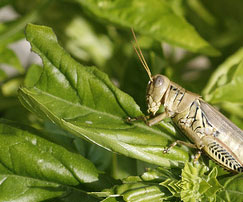
Insects with piercing-sucking mouthparts have strong mandibles that they move laterally to often cause yellowing or browning on plants, and possible wilting. Examples include aphids, scales, spider mites, and whiteflies.
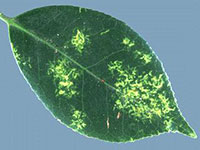
Scale damage on leaf
Pest insects can also be classified by the types of damage they cause. For example, defoliators tend to feed voraciously and strip a plant nearly bare. Many caterpillars fall into this category. Other insects include leafminers, which burrow into the leaves of plants leaving tell-tale tunnels in the leaves. One well-known leafminer is the citrus leafminer, which is actually a larval stage of a moth.
Gall makers insert all or part of their bodies into plant tissue—typically into leaves, stems, or twigs—and cause the tissue to swell. Examples include blueberry gall midge larvae that burrow into leaves to feed, and gall wasps that deposit their eggs into plant tissue.
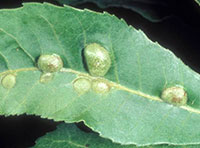
Galls on leaf
Wood/phloem borers include twig girdlers and powderpost beetles that cause damage by feeding on living wood and wooden structures.


